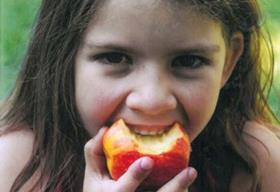
The EU School Fruit Scheme has had a positive short-term impact on the consumption of fruit and vegetables among children at the schools involved, but more time and investment will be needed before assessing whether it has led to improvements in eating habits and health over time.
Those were the main conclusions drawn in a specially commissioned report on the scheme, after the European Commission carried out a major evaluation of its implementation, effectiveness, efficiency and continued relevance to its overall stated aim of boosting public health.
The report found that the scheme appeared to work best when distribution of free fruit was carried out at least three times a week over a sustained period of more than 35 weeks.
It also called on national governments participating in the scheme to develop more detailed long-term strategies that could boost participation.
"The level of the EU funding share and the correspndiong amount of EU aid are effective instruments to influence the uptake of the scheme," it said.
"An increase is recommended in order to enlarge the School Fruit Scheme's scale and strengthen the impact on children's eating habits so that the declining trend in fruit consumption can be stopped and the intake per child reaches the level needed for the protection of its health."
The EU School Fruit Scheme was first rolled out in the 2009/10 academic year and is funded partly by the EU itself and partly by national governments, the private sector and parents.
However, the report revealed that only €55.4m of the EU's own €90m budget was spent in 2010/11, the most recent year assessed, leaving 38.4 per cent of Europe's contributinon unspent.
National bodies, meanwhile, added €39.5m to the pot in 2010/11, with parents contributing €2m and private groups €3m.
In 2010/11, more than 8m pupils in around 54,000 schools took part in the scheme, creating additional demand for 43,730 tonnes of fruit and vegetables.
Strangely, 12 per cent more schools took part that year, but the scheme reached 12 per cent fewer pupils than first anticipated, the report said.
"National and regional authorities should discuss how to support schools better and more in the process of building partnerships with stakeholders outside the schools, such as education services," it added.
It also concluded that schools themselves and the companies from which they sourced fruit needed to do more to improve the scheme's effectiveness.
"A frequency of offering fruit and vegetables as often as possible, at least three times a week, seems to be optimal for the effectiveness of the scheme," it reported.
"Since a high frequency might create higher organisational cost, schools and distributors should be encouraged to find efficient ways of implementation, for example changing supply to a two-day pattern while distributing fruit and vegetables to children every day."



